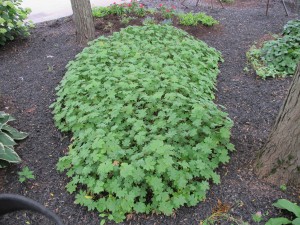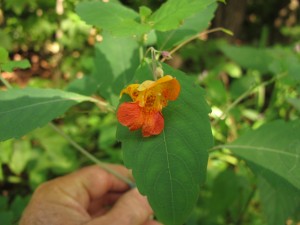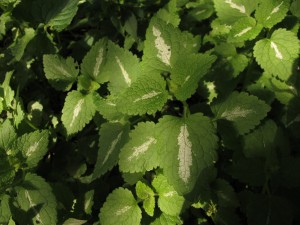Labor Savers
As I get older – I’m 67 – I sometimes wonder how long I will be able to keep on gardening at the level I do now. I have a large vegetable garden, fruit bushes and trees, many flower beds, a variety of decorative trees and shrubs – and some lawn. I have already accepted that it makes more sense to have a teenager mow the grass and to help me with some of the heavier drudgery of the garden. I am looking at ways to make less work for myself, and thought I might share a few labor-savers with you.
In the vegetable garden, mulch is my friend. It’s mid-summer, and some beds I have weeded more than once because I have not paid attention to my own dictum that mulching saves a lot of labor. But this has been a soggy summer, and there have been many days when I could not get in the garden because the ground was water-logged. And some days I almost could have kayaked down the pathways of my garden. So I did not get my mulching done early. Even when I could have mulched, I didn’t because soil looses more moisture when exposed to the sun, and I needed to let the soil dry out.
This past week I have made a real effort to weed the vegetable garden and put down mulch. My basic technique is to weed, then cover the area weeded with something to keep the sun from reaching weeds that surely will germinate. I like newspapers covered with straw or mulch hay. Six pages of this paper covered with straw will prevent most weeds and grasses from growing. This year I got some jute coffee bags to use for mulching the pathways, and I like them, too.
Weeds in walkways can spread to the beds by root or seed, so keeping them weed-free is a great boon to the tired or over-ambitious gardener. Last fall I planted grass seed in some rows, and mow it. But the width of the mower required that I space beds farther apart than I usually do. And it is awkward to get the mower around corners of rows. So it is not a perfect solution, though it looks great if you have the space to maintain nice mowed paths.
It’s tough to find good weeders to help. But a teenager can do a nice job if you just teach her to identify and pull one or two particular species of troublesome weeds. So I have someone just working on jewelweed, also called touch-me-not (Impatience capensis). It is a tall weed with orange or yellow flowers and a hollow, watery stem. It generally grows in shade or part shade. It’s not a perennial so it has a relatively small root system that pulls easily.
Jewelweed’s other common name, touch-me-not, does not indicate any poisonous properties. It has to do with the fact that ripe seed pods have built-in springs that will propel seeds some distance. Lightly squeeze a pod, and good-sized green seeds go flying.
For the past decade I‘ve been ignoring touch-me-not because my grandchildren enjoy squeezing the pods. Doing so always provokes a giggle. But over time, more and more touch-me-not has appeared, and recently I declared war on it. The plants are just starting to bloom for me, so I must get them – now! This will not preclude having some plants next year or the year after, as most seeds of garden plants are good for 3 years (and weed seeds may last even longer). There must be plenty of seeds already in my soil. So Rule #1 of reducing work in the garden: Get rid of weeds before they scatter their seeds.
Some groundcovers can be great weed inhibitors in flower beds. Others spread so fast that they become weed-like themselves. If you want to plant groundcovers, be sure to weed the area well before planting them. Get not only the tops of your weeds, but their roots as well. Use a weeding tool that can get underneath a weed, loosen the soil, and lift the entire root system. I like the CobraHead weeder for that task.
There are lots of good groundcovers – too many to mention them all here. For dry shady areas, I like dead nettles (which I call by its scientific name, Lamium, because it is not related to stinging nettles). It has pink or white flowers reminiscent of snapdragons, and some varieties have nice silver and green leaves. It spreads and grows densely enough to keep many weeds from starting up under and between the plants.
Bigfoot geranium (Geranium macrorrhizum) is another good one. It’s not related to your mother’s potted red geranium (which is actually not a geranium but a Pelargonium). It makes a very dense mound of leaves a foot tall or more. It blooms in early summer, but I grow it for the foliage and because it shades out most things. And it will grow in dense, dry shade – or full sun.
Lungwort (Pulmonaria spp.) spreads by root in either sun or shade, as does lily of the valley (Convalaria majalis). I like the former, but find the latter a bit too aggressive to keep.
There are many ways to save labor, but most important of all is getting rid of any weed that is blooming now. It will save you labor later.
Henry Homeyer is a gardening consultant and the author of 4 gardening books. His Web site is www.Gardening-Guy.com.





